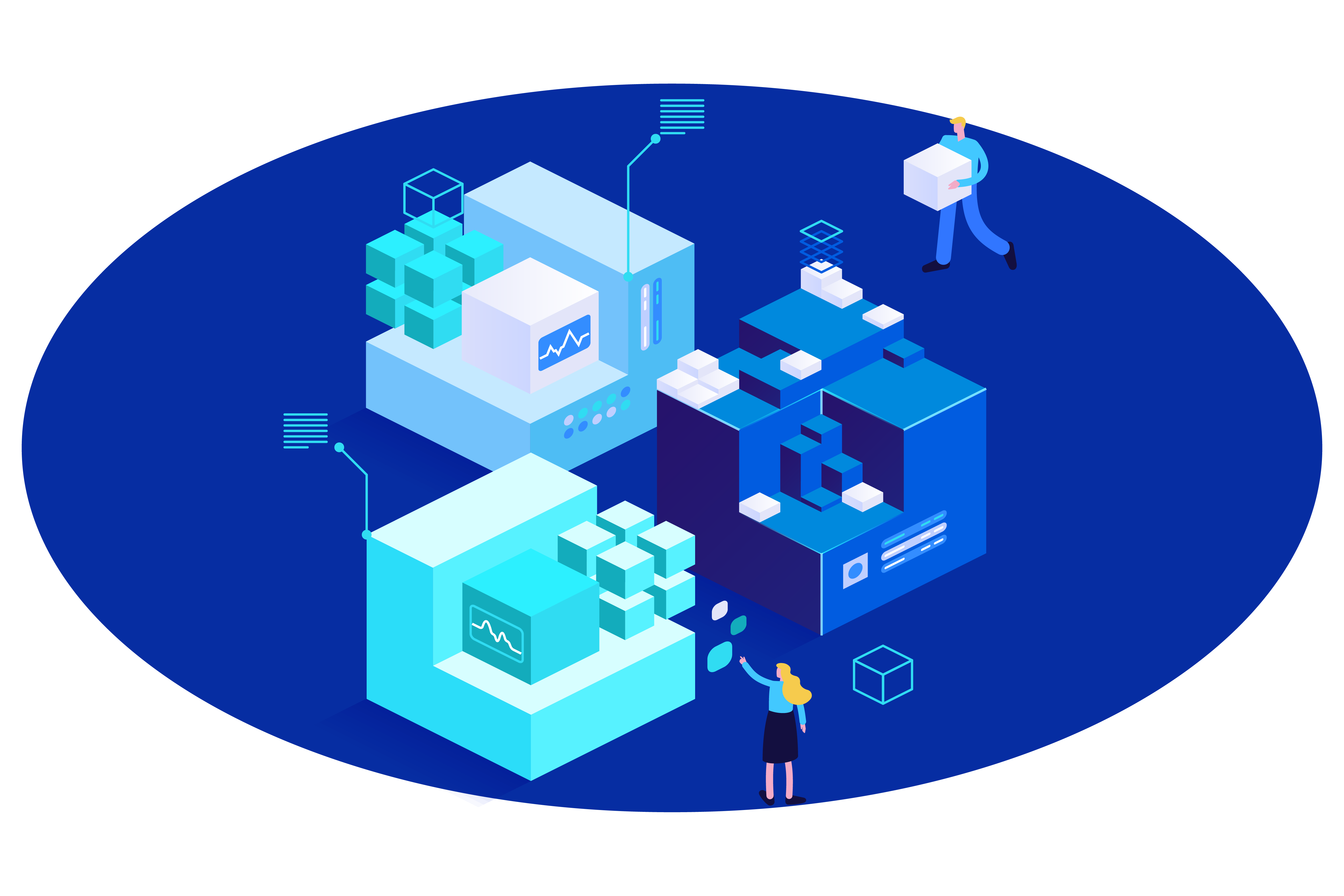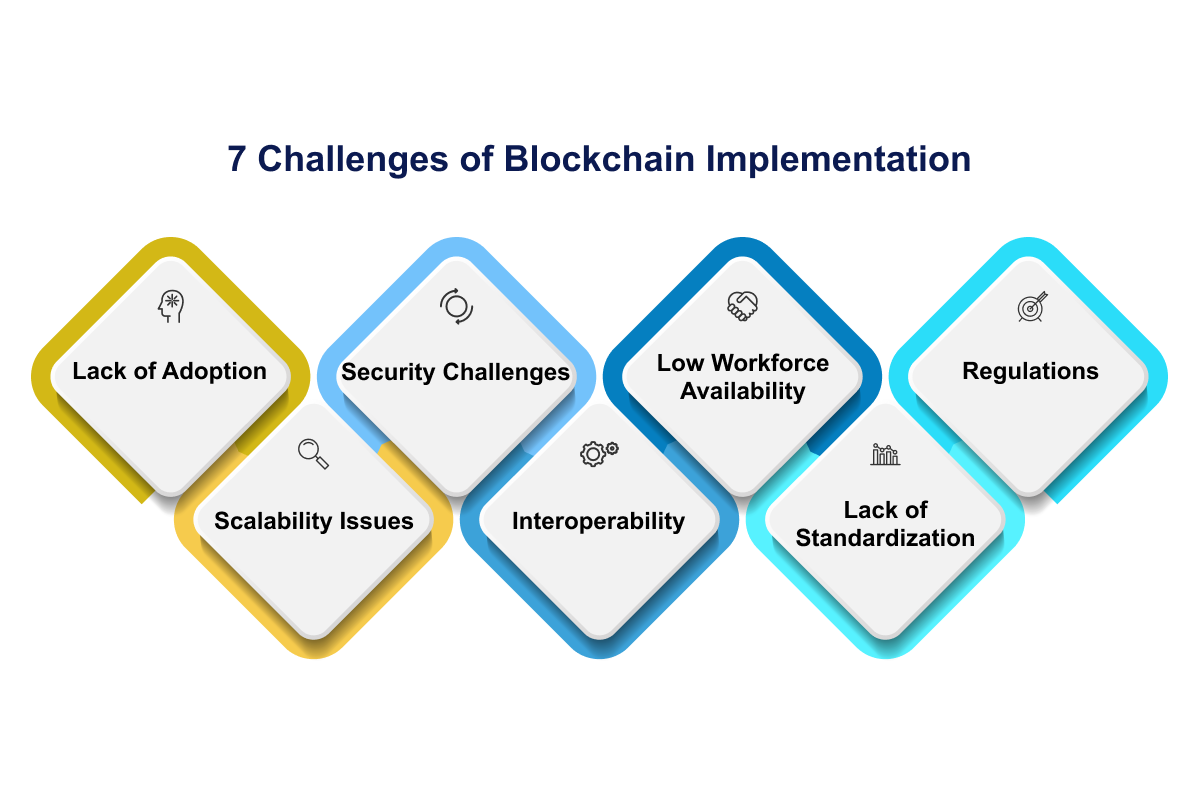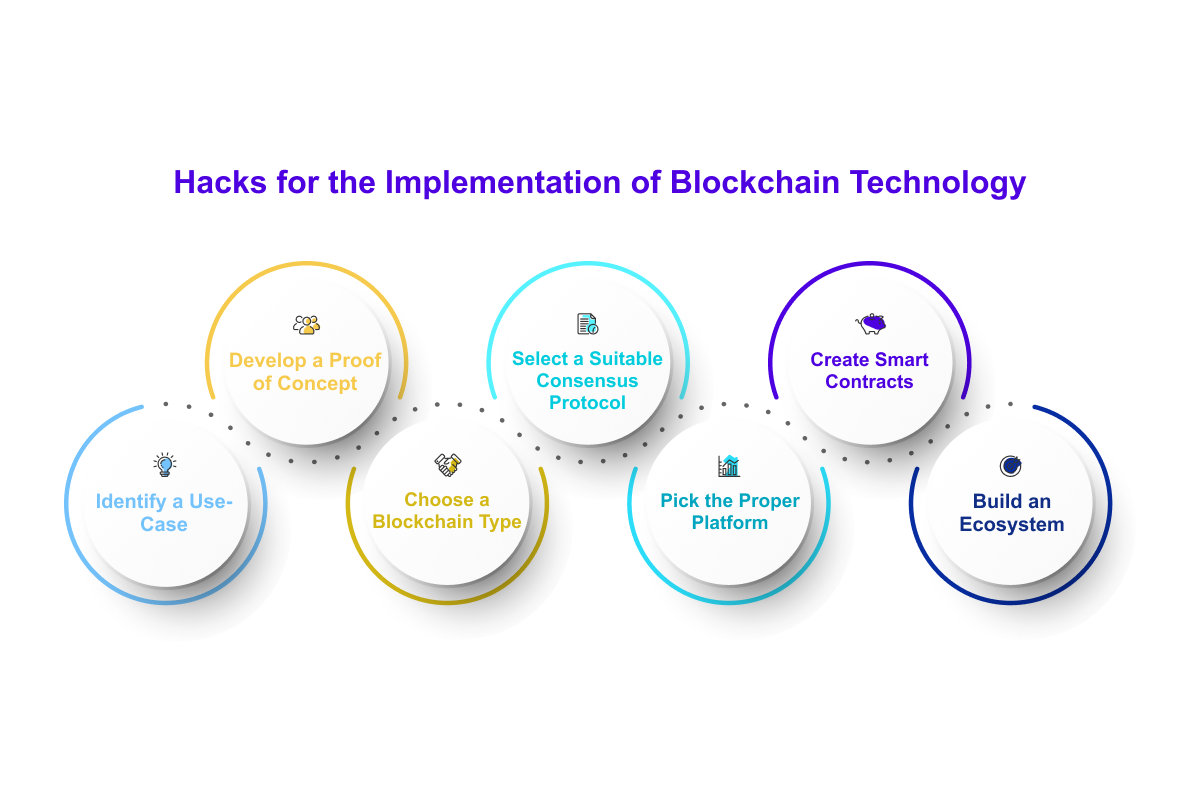Blockchain is still the buzzword in the tech world, as you can hear it almost daily. It has not only taken digital currencies by storm, but the entire world. The technology’s ability to solve complex problems in a resource-saving and efficient way, and bring trust and transparency to daily transactions, is why it is so popular.
Although the technology offers plenty of perks, the real difficulty lies in adopting blockchain, with 84 percent of companies using it at least to some degree. If you’re wondering how to implement blockchain with less friction and reap its benefits faster, we’ve prepared 7 practical hacks for you. So, continue reading to discover them all.
What is a Core Aim of Blockchain for Business Implementations?

Many companies use blockchain to rapidly scale up and out their solutions and build more robust processes and financial models. In the modern world, there are 10,000+ cryptocurrency systems running in the technology. However, it turns out, the system is also a reliable means of storing data about other types of transactions.
Some examples of blockchain implementations in businesses are Pfizer, Walmart, Unilever, Siemens, etc. Many companies in various industries adopt the technology because they expect it to provide the following:
- Secure transactions that are recorded and cannot be altered;
- Instant and transparent transactions;
- Automatically updated system;
- No intermediation fee is required;
- Authentication of transactions that are verified and confirmed by participants.
Many businesses require improved blockchain architecture, prompting a surge in investment. By 2024, the worldwide blockchain technology industry is expected to be worth $7.59 billion. Industries such as healthcare, finance, retail and agriculture aim to increase their investment in the technology to be ready for the future.
7 Biggest Challenges When Implementing Blockchain
The most important thing to know about blockchain is that it’s not a silver bullet. It is a new technology that has the potential to change the way we do things, but it won’t solve every problem or make every company more efficient. Like any new technology, blockchain needs time to develop and mature before it reaches its full potential.
Blockchain is an emerging software that has the potential to positively change the world. It’s being used in many different industries, from banking to supply chain management. But how can you implement it in your organization? Before we dive into the different approaches, let’s take a look at some of the challenges that can arise when implementing blockchain.

Lack of Adoption
Although blockchain was introduced in 2008, it has not yet gained widespread adoption. However, the technology’s ecosystem needs users and suppliers to function, as without widespread adoption, it’s ineffective. Still, the technology seems to continue to spread, and businesses create a collaborative blockchain to tackle this issue.
Scalability Issues
Transaction networks can process hundreds of transactions per second with no failure. However, when it comes to Bitcoin, it only manages 3-7 of them per second, while Ethereum — about 15-20. Thus, using these two systems slows down operations and makes blockchain useless for large-scale applications. The technology is often limited and unable to support a vast number of users.
Security & Privacy Challenges
One of the biggest drawbacks of digital transformation is the increasing theft of personal data. Therefore, blockchain should guarantee users secure and reliable transactions. To maximize data protection, the technology detects fraud in two ways: hashes and blocks. With them, it is easy to identify any change in the system and prevent hackers from accessing personal information.
Regulations
The main problem isn’t the adoption of regulations, but the nature and extent to which they should affect the implementation of blockchain. For instance, some countries have banned Bitcoin, while others simultaneously try to regulate blockchain networks, but with little success. The problem is that industry players often cannot agree on the terms for using the technology. However, the lack of regulation leads to difficulties such as scams and market manipulation.
Low Workforce Availability
Due to the huge increase of NFT and related projects, the market has problems with the labor force. Glassdoor’s statistics show that the number of blockchain job postings has increased by over 300% in the last year. However, there is a shortage of experienced developers who know how to implement blockchain technology that is efficient and reliable. As a result, companies tend to overpay engineers due to high demand.
Interoperability
The challenge is to ensure the system’s ability to share and use information. This is one of the reasons why businesses are still hesitant to deploy blockchain. Since the technology is maintained in isolation and does not interact with other networks, it cannot transmit and receive data.
Lack of Standardization
If you implement a blockchain solution, be mindful that it will have difficulties with complex operations, interoperability and increased costs. This is because there is no universal standard that the technology adheres to. Even though there is no specific version, blockchain helps businesses make it possible to initiate international criteria. If you are thinking about how to implement blockchain in healthcare, you should know that it works with electronic health records and standard protocols and binds them to specific norms.
7 Hacks on How to Implement Blockchain Technology
Blockchain is a very complex technology, so there are many challenges that companies face when trying to integrate it into their operations. But there are a few hacks that can simplify the process. Here are 7 blockchain tips to help you make the adoption process less cumbersome, but effective.

1. Identify a Use-Case
This is the first step of blockchain project implementation, laying a foundation for future success. Enterprises need to select use cases that fit their requirements and needs. This allows them to learn the pitfalls and conditions of blockchain implementation and how they can transform their business with innovation. This step can change the entire game of technology adoption by altering how it functions.
2. Develop a Proof of Concept (POC)
Proof of Concept, or PoC, is a process used to verify that the project is functional and feasible for engineers to develop software. Using this procedure, enterprises can improve automation and streamline repetitive tasks. The result is that they can provide greater value to customers. By following these steps, companies can create a solid PoC:
- Develop a set of guidelines that explain the project;
- Design a prototype;
- Test the prototype;
- Analyze the MVP.
3. Choose a Blockchain Type
Before implementing blockchain in business, you should select the technology that best fits your needs. Basically, there are two types you can choose between: public and private.
Public Blockchain: Anyone can use this network without the permission of third parties if only they have an Internet connection. Among the advantages of this type of technology is that it operates according to an incentive system that encourages new participants to join and keeps the network agile. Examples of such blockchains include Bitcoin, Litcoin and Ethereum.
Private Blockchain: Only trusted participants can use this type of technology. The system owners are the ones who take full control over the software and can change the rules depending on various factors (e.g. number of users, permissions, power levels, etc.). It’s also possible to combine this network with other blockchains.
4. Select the Most Suitable Consensus Protocol
Opting for the right consensus protocol will benefit your organization, as it improves its optimization and operations. It aims to solve mathematical problems that require a large amount of computing power. The protocol also creates an unchallengeable system of agreement between devices in distributable networks and protects against hacking attacks. Here are a few of the most essential consensus protocols:
- Proof-of-Stake (PoS)
- Proof-of-Work (PoW)
- Proof-of-Weight (PoW)
- Byzantine Fault Tolerance (BFT)
- Delegated Proof-of-Stake (DPOS)
- Byzantine Fault Tolerance (BFT)
5. Select the Proper Platform
While deciding on a blockchain platform, make sure it responds to your business needs and fits your budget. Also, consider factors from thorough market research when making your decision. Here are the steps you can take to make a smart choice:
- Learn more about different platforms;
- Create a strategy for using blockchain;
- Contact regulators for clarity.
The most famous blockchain platforms are Ethereum, Quorum, Hyperledger, Multichain, Corda, Open Chain, Bitcoin, etc.
6. Create Smart Contracts
This step allows companies to conduct transactions without third-party interference, making them transparent, secure and automatic. These digital contracts regulate the collaboration between parties and ensure that they meet certain conditions. This is a necessary and convenient tool for new-generation systems, ensuring fairness, security and ease of data transfer.
7. Build an Ecosystem
To ensure the optimal efficiency of your blockchain project, you should build an ecosystem with a community in it. Stakeholders take an important part of using the technology because they know its potential and can suggest improvements. We recommend you a few tips to create a workable ecosystem:
- Build a blockchain with a smaller number of stakeholders first;
- Explore the blockchain industry‘s applications;
- Find a blockchain community and join it;
- Research the competition.
If you have already reached this stage, please make sure that you have these 3 components: the distributed ledger, the consensus mechanism and the smart contracts. They are the key components that guarantee the effective running of the blockchain solution.
Conclusion
Blockchain is a transformative technology that improves security, reduces costs, and streamlines operations by minimizing third-party involvement. For enterprises to remain competitive, adopting blockchain is essential. In particular, blockchain in supply chain management plays a crucial role in enhancing transparency and efficiency. Along with its growing impact in finance, healthcare, real estate, and law, blockchain technology is becoming indispensable. Businesses that fail to embrace it may struggle to keep up with industry leaders and lose their competitive edge.
Once you decide that implementing a blockchain solution is what you need right now, you have to find a team of experts to help you with the task. Our engineers have in-depth knowledge and experience in this technology and develop solutions that are aligned with our clients’ business needs. Contact us to learn more!




